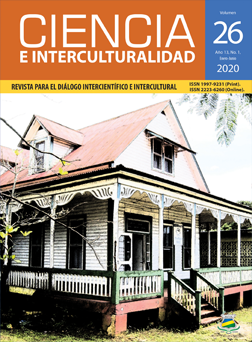Floristic composition of medicinal plants from the Tiktik Kaanu indigenous community
Abstract
The floristic composition of medicinal plants of the Agroforestry Transfer Center (CeTAF) was inventoried, and its cultural importance in the Indigenous community of Tiktik Kaanu, Rama and Kriol Territory, Autonomous Region of the South Caribbean Coast (RACCS). The diversity, state of conservation was known and the types of use and application of wild and cultivated medicinal flora were investigated. 40 species distributed in 33 genre and 26 botanical families were identified. The most abundant genre are Fabaceae, Rutaceae, Poaceae and Lauraceae. One species was identified for each appendix, I and II, of the CITES agreement. However, there is a lack of updated information to categorize the conservation status of more than 90% of the species in this area, from the studied collection that are used for the treatment of diseases that affect indigenous people and the general population. Materials used in the preparation of medicines include leaves, bark, roots, fruits, sap, (wooden) stems, flowers, and seeds. In some instances, the entire plant can be used, including the roots
Downloads

This work is licensed under a Creative Commons Attribution-NonCommercial-NoDerivatives 4.0 International License.
El autor mantiene los derechos morales y permite la cesión gratuita, exclusiva y por plazo indefinido de sus derechos patrimoniales de autoría a la Universidad de las Regiones Autónomas de la Costa Caribe Nicaraguense (URACCAN).






